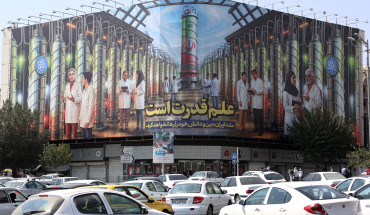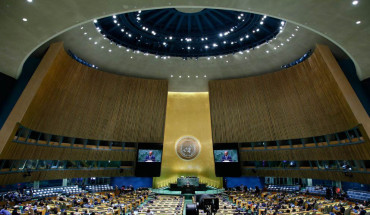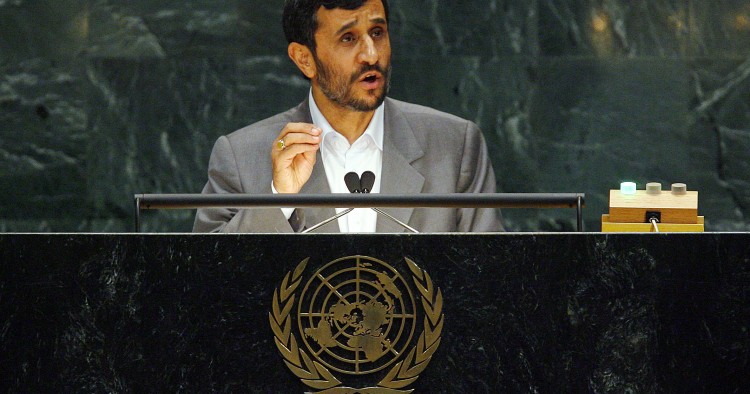As one of the most important events of the past three decades in the Middle East, the Islamic Revolution not only has sustained itself, but the Islamic Republic which it spawned celebrated its 30th anniversary in February 2009.
Regime sustainability despite different internal crises and foreign threats underlines the fact that Iran enjoys a relatively rational decision-making process. The central slogan of the Iranian Revolution was “Independence, Freedom, and Islamic Republic.” Today, Iran is an independent state, as it does not belong to an Eastern or a Western bloc. Although the country has not realized its ambition of economic independence, the revolution has provided economic welfare. Rural development has improved people’s lives by providing villages with water, electricity, and infrastructure. The essence of independence also referred to the specific relations between the Iranian monarchy and the United States. The US-sponsored 1953 coup against the popular Muhammad Mosaddeq government made Iran an American client state, leading to Iranian dependence in all aspects.
Iran has 1% of the world’s population and about 7% of global mineral resources.[1]Yet, the country’s post-revolutionary economic performance has remained well below its actual potential, due to war and regional crises as well as internal problems such as mismanagement and other ills. Nonetheless, in recent years, Iran has witnessed a period of sustainable growth with GDP growth rates above the world average — a trend that is likely to continue.
Over the past three decades, Iran’s foreign policy has moderated significantly and meaningfully. Whereas Tehran initially rejected the prevailing norms of the international system, today the government largely benefits from opportunities emerging from the international system. Despite President Mahmud Ahmadinejad’s rhetoric, he participates at UN General Assemblies, meets with other leaders, and gives interviews to the US media. In seeking to project its influence and protect its interests, Iran has increasingly yielded to realist principles.
To predict the future of the country, one could look at new driving forces, rationales, plots and scenarios. What follows is a summary of some important and discernible trends in Iran and projections about the country’s future.
In terms of domestic political developments, state decision-making will become broader and more complex. Younger institutions, such as the Expediency Council and Supreme National Security Council will gain in significance. Some look at the “Chinese model” as the way forward; that is, economic reforms and cultural liberalization alongside political orthodoxy. However, differences between Chinese and Iranian cultures and history would impede the application of this model. The Islamic Republic enjoys the loyalty of many ordinary people (mainly the rural population) who have benefited from the post-revolutionary improvements. However, economic problems (e.g., inflation, unemployment, brain drain, underdevelopment of non-oil sectors, etc.) overshadow the overall development. As such, the main threat against the regime is from within, especially fed by economic and social dissatisfaction. The growing urban middle class and its interdependence with socio-political stability will make a violent upheaval impossible, but the regime could theoretically collapse. Though unlikely, given high oil prices, severe economic problems could lead to an acute paralysis leading to an implosion. Therefore, a growing number of stakeholders will focus on providing the basis for continued economic growth.
With regard to energy sector developments, Europe’s need for energy diversification is an opportunity for Iran. In a bid to reduce dependency on Russia, the European Union (EU) is looking for new energy resources, especially in natural gas. There is substantial potential for energy cooperation between Europe and Iran, the holder of the world’s second largest gas reserves. Growing global energy consumption has imparted great importance to Iran, which has a combined oil and gas reserve of 315 billion BOE.[2]With footholds in the Persian Gulf and the Caspian Sea, Iran has the potential of becoming a major energy player. Due to the depletion of its oil resources and the desire to remain a strategic oil and gas exporter, Iran feels an urgent need to develop nuclear energy. The current tensions surrounding Iran’s nuclear program could ease if Tehran were to adopt a three-pronged strategy: normalizing its nuclear file through greater cooperation with the International Atomic Energy Agency (IAEA); carrying out cost/benefit analyses for its nuclear industry; and using public diplomacy more effectively to present its intentions and performance.
Concerning foreign policy, it is important to emphasize that is geo-strategically located in the Middle East, the Persian Gulf, Central Asia, and the Caspian region. Iran’s foreign policy is therefore regionally focused. However, Iran’s own internal problems, compounded by US efforts to isolate Iran, hamper investments in the region. For the first time since 1979, Tehran is positioning itself to be an economic and technological power. Facing continued challenges, Iran sees “survival in becoming a regional power.” Therefore, regionalism will be the main component of Iran’s foreign policy for decades. Without exaggerating Iran’s role, it is fair to say that Tehran has contributed to the region’s economic development and political stability — a trend that will continue, even though modestly on the economic level. While Iran’s regional engagement has not led to any loss of sovereignty, Iranian officials recognize that in order to derive the benefits of regionalism, Iran will have to join its neighbors in introducing governance mechanisms between the global and the national levels. Iran joined the Shanghai Cooperation Organization (SCO) to reduce its concern over military and security threats from two sources — the Taliban-style extremism and radicalism as well as the American military presence in the region. However, the SCO cannot diminish US threats against Iran.
Specifically concerning US-Iran relations, it is open to question how long Iran can go without a diplomatic breakthrough. Some argue that the objective of economic progress necessitates at least economic relations with the United States. Others argue that it will be the United States that will need Iran, especially in the light of the current financial crisis. Some believe that re-establishing ties with the US would lead to the collapse of the Islamic Republic. They argue that the pillar of this regime has been anti-Americanism; therefore, the regime would face many challenges relations to resume. Others believe good relations with Washington would not bring prosperity and development for third world countries perforce. Furthermore, Iran’s economic, political, and social problems are rooted in cultural and historical trends which would not be resolved overnight through a resumption of relations. The hardliners in Iran state that America’s power is in decline and that Tehran should take advantage at this juncture. However, they leave two questions unanswered: First, will American power diminish before it can damage Iran? Second, will the end of American dominance coincide with the appearance of a new unipolar power or with the creation of a multipolar world system? If the latter, will Iran be prepared for a multipolar environment?
There is a lively debate among Iranian intellectuals on these very questions. Emerging from this debate is the suggestion that the government of the Islamic Republic of Iran, which has survived 30 years without ties with a superpower and which has withstood various sanctions, would probably be more stable should it decide pursue a rapprochement. As in the past, Iran’s future will determined by the complex interplay between key domestic political and economic factors on the one hand, and the country’s relations with its neighbors and with the United States.
[1]. Including 10% of proven oil and 16% of natural gas resources.
[2]. BOE = barrels of oil equivalent.
The Middle East Institute (MEI) is an independent, non-partisan, non-for-profit, educational organization. It does not engage in advocacy and its scholars’ opinions are their own. MEI welcomes financial donations, but retains sole editorial control over its work and its publications reflect only the authors’ views. For a listing of MEI donors, please click here.













